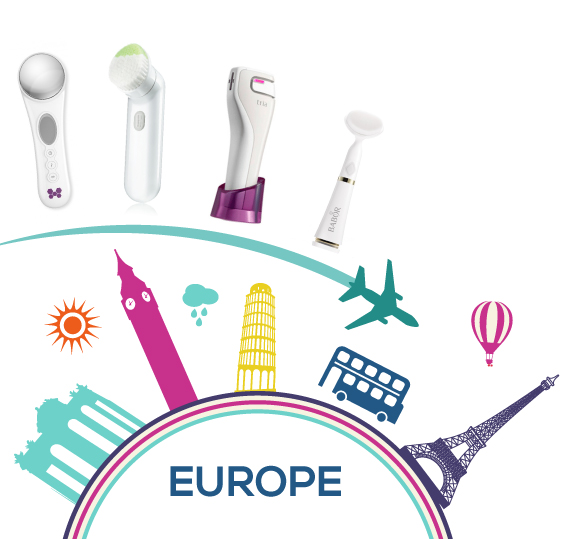Our soon-to-be-published report on the at-home beauty devices market revealed some interesting trends that we have not seen since we’ve started covering this market four years ago. This year, it is expected that Europe’s growth for the at-home beauty devices market will outpace the United States, approaching to a 25% increase. This is an impressive number as other related markets, such as professional skin care, achieve an approximately 7% growth. What’s driving this growth?
Estée Lauder’s Clinique Sonic Cleansing brush, in both the United States and Europe, and Clarisonic’s facial sonic cleansing brushes Mia, have surely contributed to this remarkable gain. Tria Beauty and Iluminage Beauty have created a new segment of ultra premium priced anti-aging products, featuring Age Defying Laser (Tria) and the Skin Smoothing Laser (Iluminage Beauty), respectively. European brands such as Rio and Beurer introduce pedicure and microdermabrasion devices, thereby expanding their presence into new segments. In 2014, Nurse Jamie enters the European market with an anti-aging device called Accelerator Ultra.
New countries that are coming into the fold, as well as the expansion of distribution in the existing market, are also playing a significant role in the region’s growth. A few marketers move into travel retail, expanding their existing partnerships through airport duty-free shops (Clarisonic) and electronic shops at the airport (Philips, Braun, and Rio in the Netherlands).
The direct channel, especially home shopping channels and the Internet, continues to be a haven for marketing beauty devices products and holds the largest share of the distribution’s channel pie. In addition, a few companies, such as Pretika and Shaser Bioscience, expand their distribution network to mass outlets. Established companies such as Strivectin and Remington focus on expanding their distribution and educating consumers, rather than on introducing devices during the year.
On the other side of the pond, the U.S. market continues to post respectable gains. Overall factors such as increasing consumer awareness, intensive marketing efforts, and an increase in distribution support the moderate sales growth in 2014.
To find out more about the changes and challenges of the at-home beauty devices market, refer to our soon-to-be-published Beauty Devices: Global Market Analysis and Opportunities. The 2014 edition will take a deep dive into the dynamics of this market and provide reliable insights about its size and growth, competitive landscape, new product launches, and trends, as well as key changes in distribution. The regions covered in the study are Europe, China, Japan, South Korea, and the United States.
Written by Prashant Sharma, Project Manager – Kline’s Consumer Products Practice

